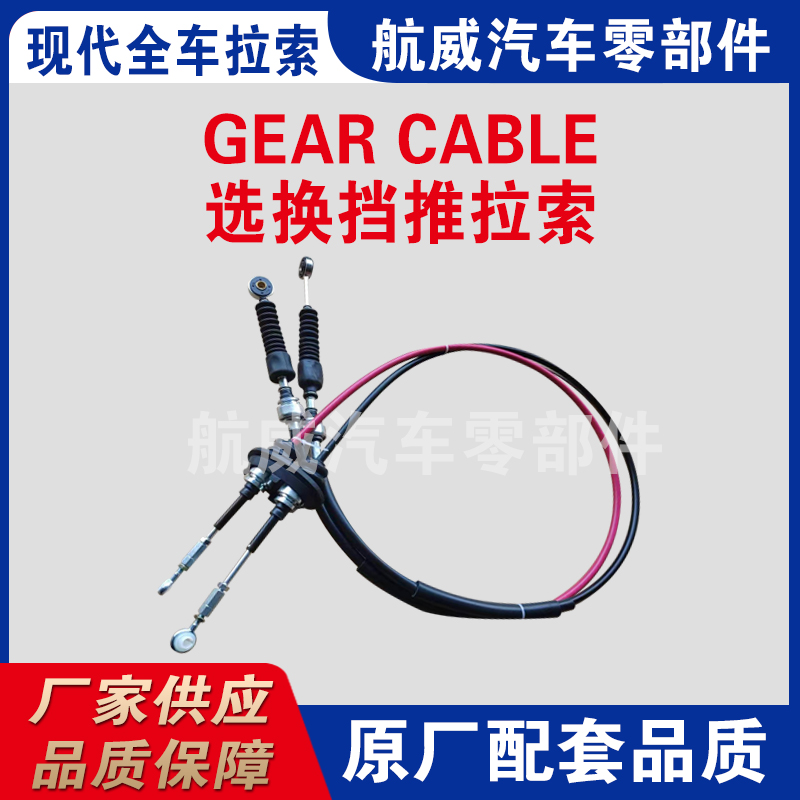Premium Gear Cable: Durable, Smooth Shifting, Fast Shipping
Shift Selector Cable: An Insider’s Look at the Modern Gear Cable
I’ve spent enough time in plants and teardown labs to know a good shifter cable when I feel one. The Shift Selector Cable from Qinghe County (yes, the hub off Minjiang Street, Wuzhishan Road—old school craft meets modern QC) is one of those quiet components that does a loud job: it makes every gearchange feel clean, predictable, and, frankly, a bit more premium than you’d expect.
Industry trend check: despite the buzz around shift-by-wire, demand for a robust mechanical Gear Cable remains steady in ICE vehicles, light commercial fleets, off-highway equipment, and even marine throttle/shift systems. Why? Cost, serviceability, tactile feedback, and reliability in harsh environments. EV platforms still use cables for park-lock mechanisms and secondary actuations. So no, cables aren’t going away—just getting smarter and more durable.

What’s inside, and why it matters
The Shift Selector Cable uses a low-friction liner, a precision-stranded steel core, and a tough, extruded jacket. Put simply: less drag, less NVH, more accuracy. Many customers say shift effort drops right away; the surprising bit is how consistent it stays in winter after a few thousand kilometers.
Key Specifications (typical)
| Parameter | Spec (≈ or typical; real-world use may vary) |
|---|---|
| Core wire | High-carbon steel, galvanized; optional stainless |
| Liner | PTFE/PA12 low-friction, dry-lube treated |
| Outer jacket OD | ≈ 6.5–8.0 mm |
| Min. bend radius | ≈ 75–100 mm |
| Operating temperature | -40 °C to +120 °C (peak +140 °C short-term) |
| Push–pull load capacity | Push ≥ 300 N; Pull ≥ 500 N |
| Friction force (new) | ≈ 8–12 N @ 500 mm stroke |
| Corrosion resistance | ≥ 240 h NSS (ISO 9227 / ASTM B117) on hardware |
| Service life | ≥ 300,000 shift cycles; endurance tested to 500,000 in lab |
Process flow, testing, and certifications
Materials are sourced to automotive-grade specs, then: wire drawing and stranding → PTFE/PA12 liner extrusion → jacket overmold → end fitting swaging and crimp pull tests → 100% stroke and friction check. Routine audits include salt-spray, thermal cycling, abrasion (Taber), and misalignment/side-load tolerance. Factory QMS: ISO 9001 and IATF 16949 aligned. Frankly, that last one matters to OEMs and the pickiest Tier-1s.

Applications and real-world advantages
- Passenger cars and light trucks: transmission shift linkage with low NVH
- Off-highway & agriculture: reliable actuation under mud, dust, vibration
- Marine: throttle/shift where corrosion resistance is king
Advantages—lower shift effort, stable feel over temperature swings, tidy routing with tight bend radii, and easy service. One fleet manager told me they noticed fewer “hard-to-engage” complaints after swapping to this Gear Cable in delivery vans.
Vendor comparison (quick glance)
| Vendor | Lead Time | Certs | Customization | Test Data Transparency |
|---|---|---|---|---|
| HWEI Shift Selector Cable | ≈ 3–5 weeks | ISO 9001, IATF 16949 | Stroke, ends, jacket, temp grades | Full PPAP pack on request |
| Generic A | 4–8 weeks | ISO 9001 | Limited end fittings | Summary reports only |
| Import Broker B | Varies | Unclear | Minimal | Not available |
Customization options
End fittings (ball joints, clevis, threaded M5–M8), jacket compounds (standard, low-temp arctic, high-temp engine-bay), stroke length, mounting brackets, and boot designs. If you’re chasing a specific shift map feel, friction tuning is possible—small changes, big difference.
Case snapshot
A regional LCV fleet retrofitted the Gear Cable across 120 vans. Lab-to-road data: shift effort trimmed by about 18%, cold-start stiffness reduced noticeably below -20 °C, and warranty claims on linkage issues dropped within two quarters. Not flashy, just effective.
Testing & compliance touchpoints
- Neutral salt spray per ISO 9227 / ASTM B117
- Abrasion per ASTM D4060 (coating/jacket durability)
- Automotive QMS aligned to IATF 16949; PPAP available
- Thermal cycling and UV aging (ISO 4892-2) where specified
Citations:
- IATF 16949:2016 – Automotive Quality Management Systems
- ISO 9227 – Corrosion tests in artificial atmospheres (salt spray tests)
- ASTM B117 – Standard Practice for Operating Salt Spray (Fog) Apparatus
- ISO 4892-2 – Plastics: Methods of exposure to laboratory light sources
-
Clutch Line: Braided, Leak-Proof, OEM-Grade PerformanceNewsNov.10,2025
-
Throttle Cable: Durable, Smooth Control & Universal FitNewsNov.10,2025
-
Throttle Cable: Durable, Smooth, Universal Fit, Easy InstallNewsNov.10,2025
-
Clutch Line: Durable, Leak-Proof, OEM-Grade PerformanceNewsNov.10,2025
-
Hand Brake Cable | Custom, Universal & Trailer SolutionsNewsNov.10,2025
-
Clutch Line: High-Pressure, OEM-Fit, Corrosion-ResistantNewsNov.03,2025
